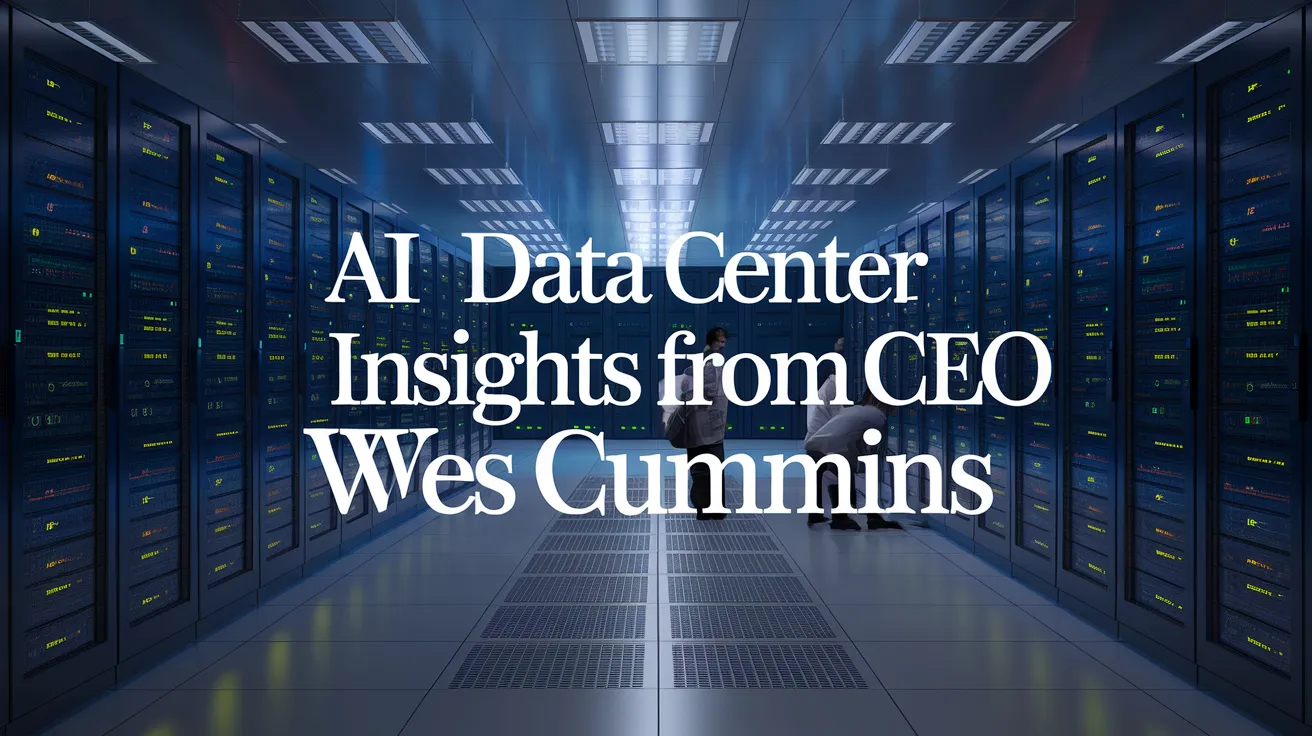AI Data Center Insights from CEO Wes Cummins

HARWOOD, N.D. — As a Texas company prepares to break ground this month on a $3 billion artificial intelligence data center north of Fargo, readers have posed several inquiries regarding the facility.
The Forum engaged with Applied Digital Chairman and CEO Wes Cummins this week to discuss the 280-megawatt facility planned for east of Interstate 29 between Harwood, North Dakota, and Fargo. This 160-acre center will be situated on 925 acres adjacent to the Fargo Park District’s North Softball Complex.
On September 10, the Harwood City Council voted unanimously to rezone the land from agricultural to light industrial use, granting Applied Digital the final approval necessary to commence construction within the month. “We’re grateful for the City of Harwood’s support and look forward to continuing a strong partnership with the community as this project moves ahead,” Cummins remarked after the approval.
Applied Digital plans to initiate construction this month, with a partial opening anticipated by the end of 2026 and full operational capacity expected early in 2027. This significant project is projected to create approximately 700 construction jobs and require over 200 full-time employees for its ongoing operations. While the facility is expected to catalyze economic growth and generate tax revenue for the area, specific financial estimates have yet to be revealed.
The Harwood facility has stirred many questions and protests within the community. Among them, readers were curious about the practical applications of the AI data center. Cummins explained that the center would provide “high-performance data centers and colocation solutions for artificial intelligence, cloud, networking, and blockchain industries.” He noted that applications like ChatGPT operate in such environments, highlighting the vast number of servers capable of handling both training and inference tasks for AI.
As of now, Applied Digital hasn’t disclosed which companies will use the Harwood facility, tentatively named Polaris Forge 2. However, Cummins mentioned targeting well-known U.S. entities like Google, Meta, Amazon, and Microsoft for their services. He emphasized the growing demand for AI capacity, stating, “North Dakota continues to be one of the most strategic locations in the country to meet that need. We are seeing strong interest from multiple parties and are in advanced negotiations with a U.S. based investment-grade hyperscaler for this campus, making it both timely and prudent to proceed with groundbreaking and site development.”
Questions about the choice of North Dakota as the site for the facility also arose. Cummins attributed this decision to the state’s substantial energy production capabilities, stating that North Dakota generates more energy than it uses, making it an optimal location for energy-intensive operations. Furthermore, he pointed out that the cold climate aids in regulating facility temperature, thereby reducing energy costs compared to hotter states like Texas.
Concerns regarding resource usage, particularly water, have been prevalent among community members. Cummins acknowledged the high water consumption by other AI data centers globally but assured that Applied Digital has implemented a closed-loop system for their North Dakota centers, minimizing water usage. He likened the cooling system to a car radiator, utilizing a glycol liquid that continuously recirculates after cooling the servers. He compared the overall water consumption of the facility to that of a typical household, noting that minimal water usage would be required primarily for bathroom breaks and drinking.
Local residents have also questioned whether the data center would lead to increased electricity rates. Cummins indicated that the center’s operation would not adversely affect electricity costs for residents, asserting that data centers help spread fixed utility costs across more users. He referenced the existing Applied Digital center in Ellendale, North Dakota, which has reportedly saved local ratepayers $5.3 million in 2023 and $5.7 million in the prior year, and expressed confidence that similar savings could be realized for Harwood.
As for noise levels, Cummins assured that the facility’s concrete structure is designed to contain operational sounds, primarily limited to fan noise from heat pumps used for cooling. He explained that nearby residents might hear some level of sound, albeit minimal if they are located at a distance from the facility. The construction noise will be the loudest aspect, according to Cummins, who emphasized that only a fraction of the total land purchased will be used for the center, reserving the remainder to serve as a sound buffer.
The environmental impact of the facility has also been a topic of discussion. Cummins stated that the project would not produce emissions or other hazardous outputs that would necessitate extensive environmental studies.
Despite criticisms regarding the rapid approval process for the facility, Cummins noted the competitive nature of the AI industry, particularly in the U.S. versus China. He expressed urgency in advancing this project to gain a foothold in a rapidly evolving landscape for artificial intelligence. Cummins remarked, “I do believe we are in a race in the world for super intelligence… It’s vital for the U.S. to win this AI race to super intelligence and then to artificial general intelligence.” Notably, he reported significant support from the Harwood community, attributing much of the protest to individuals from outside the locality.
In conclusion, Cummins asserted that few projects possess the potential to generate such substantial economic benefits with minimal negative impacts on the local community, highlighting the transformative nature of such initiatives in smaller towns.